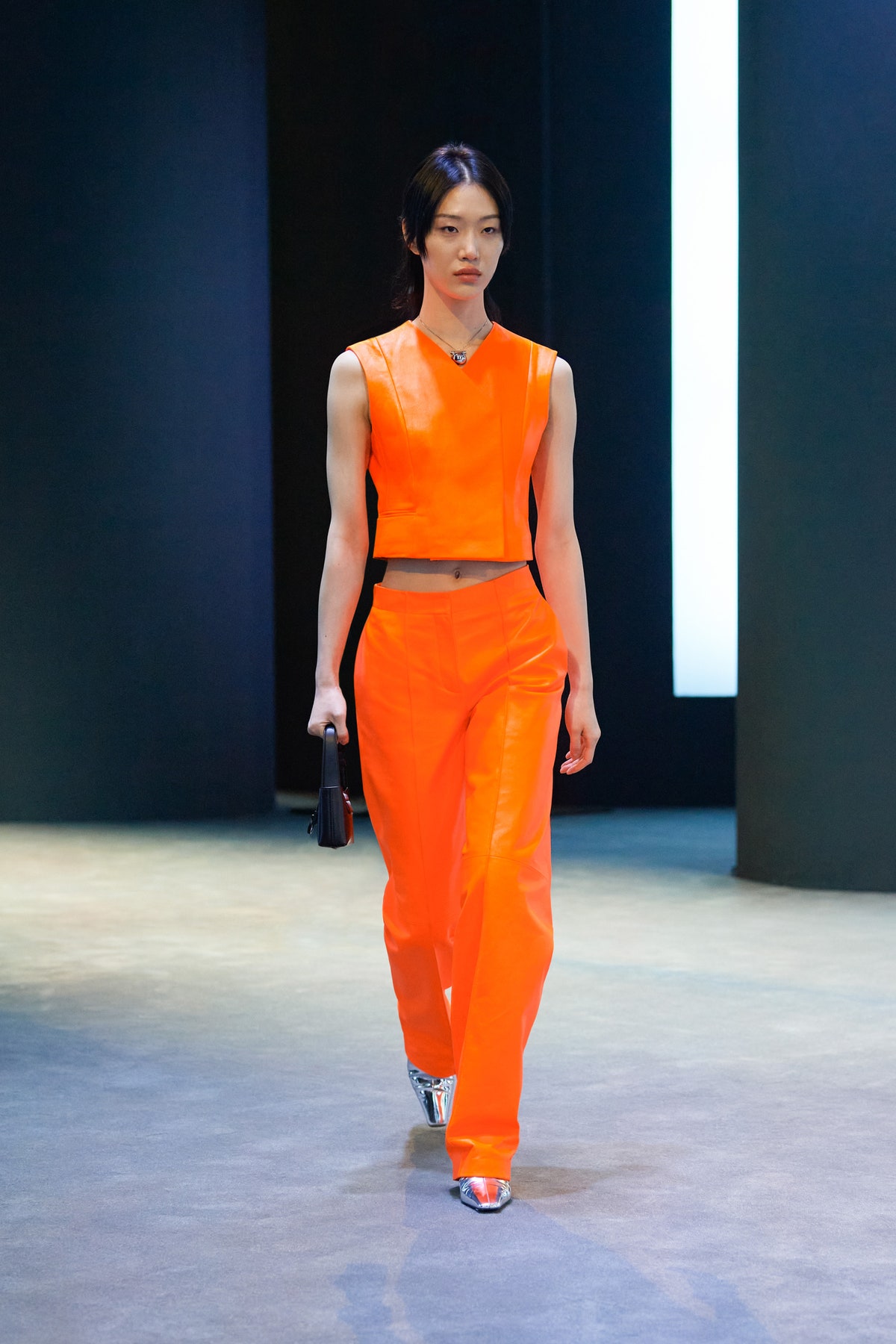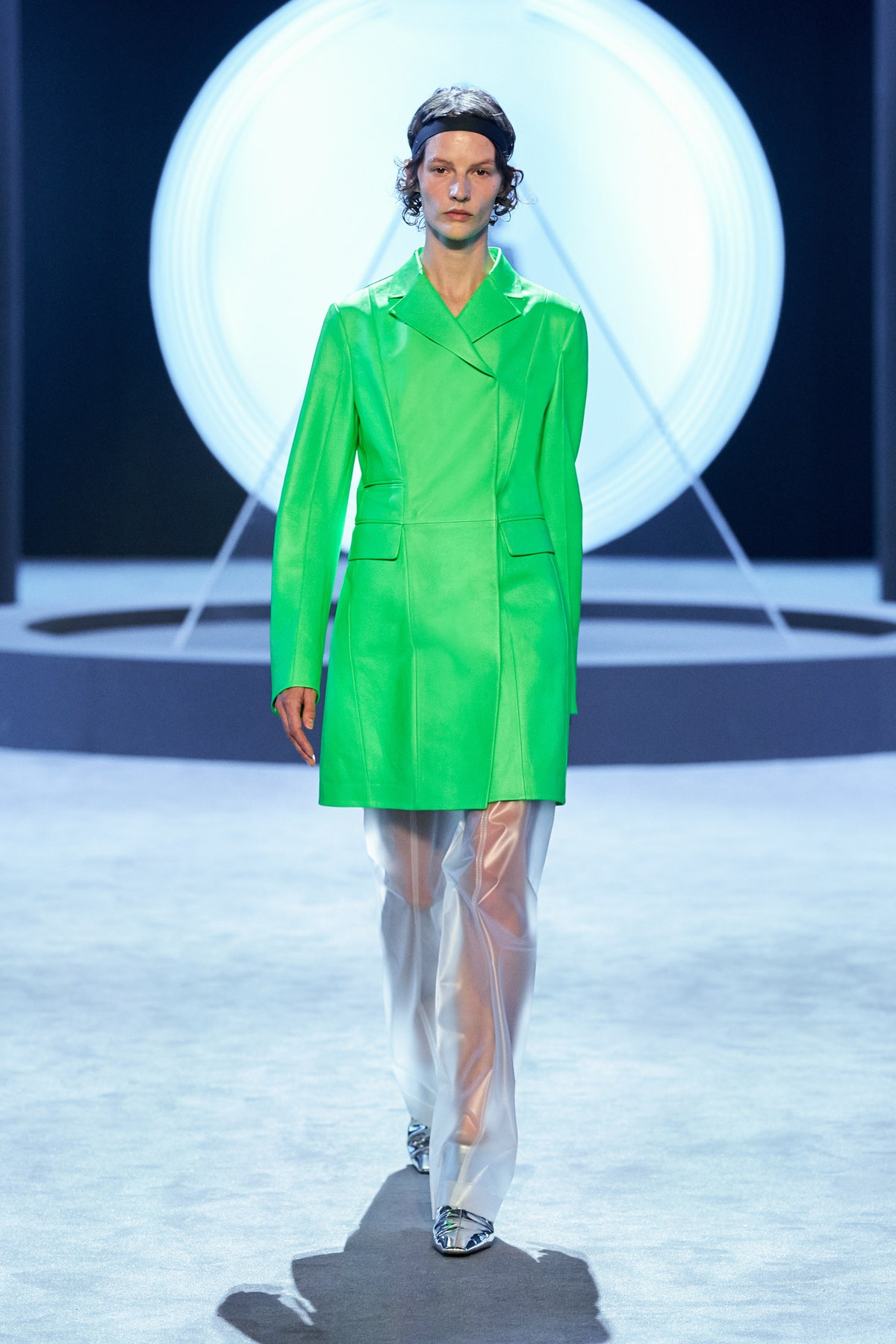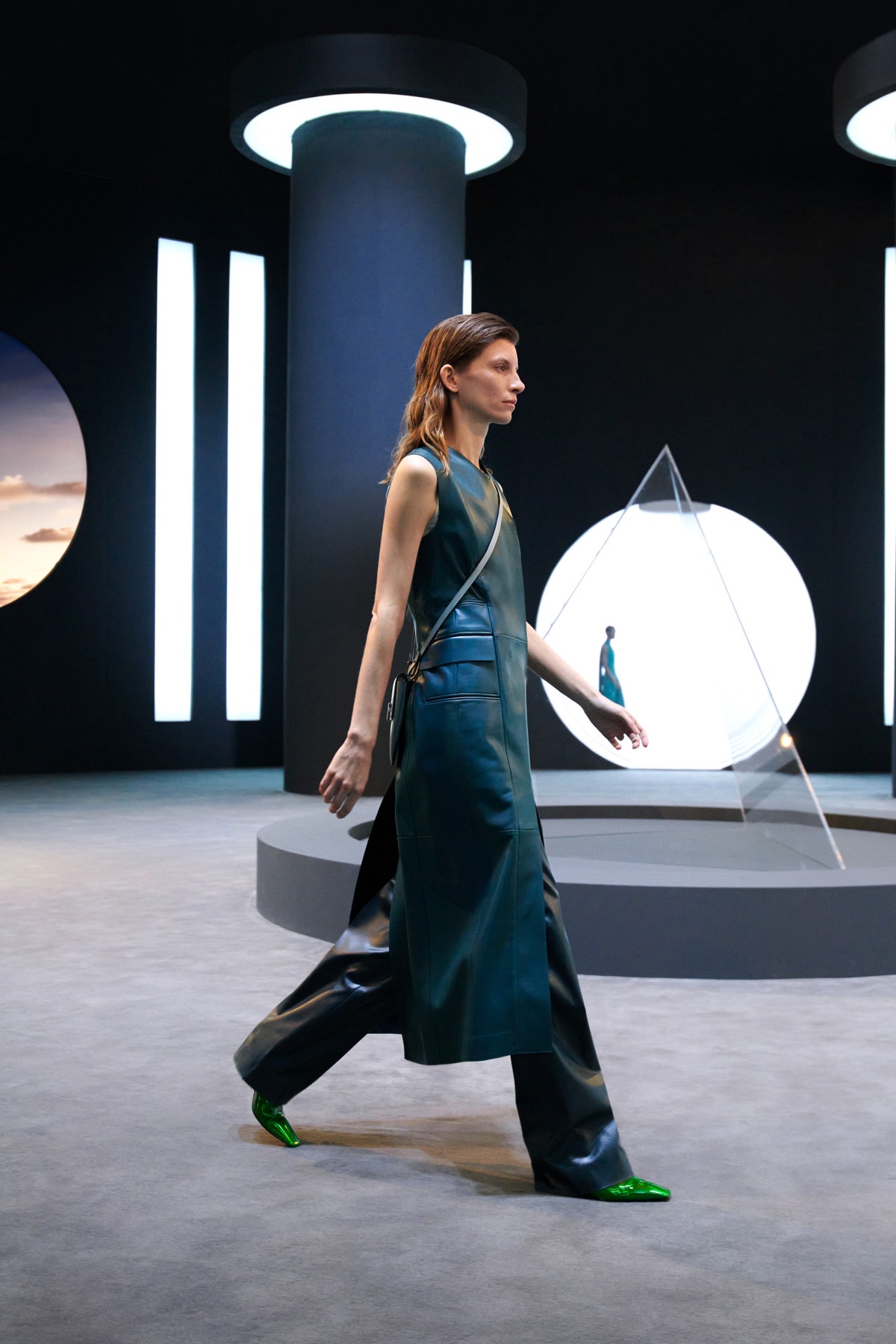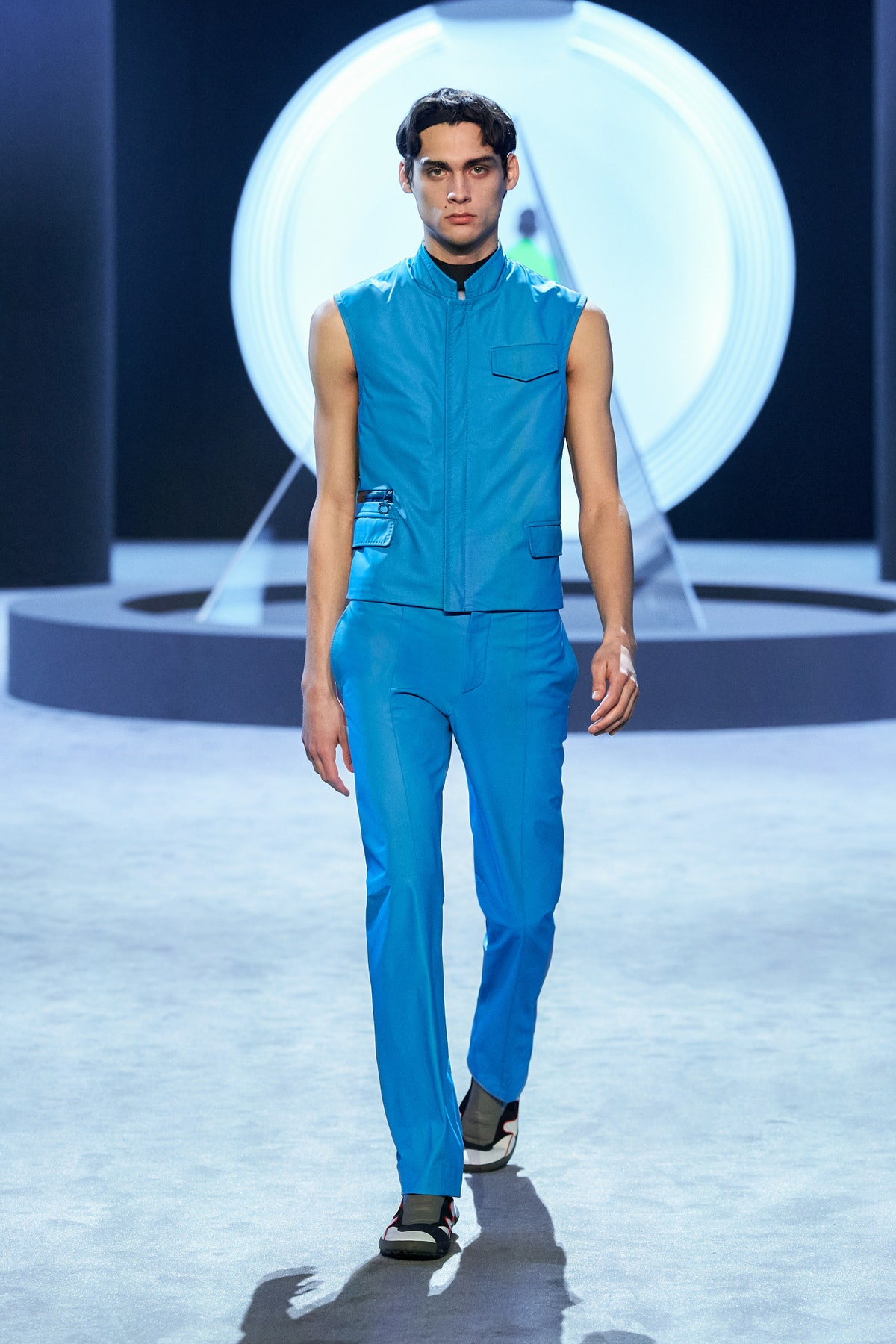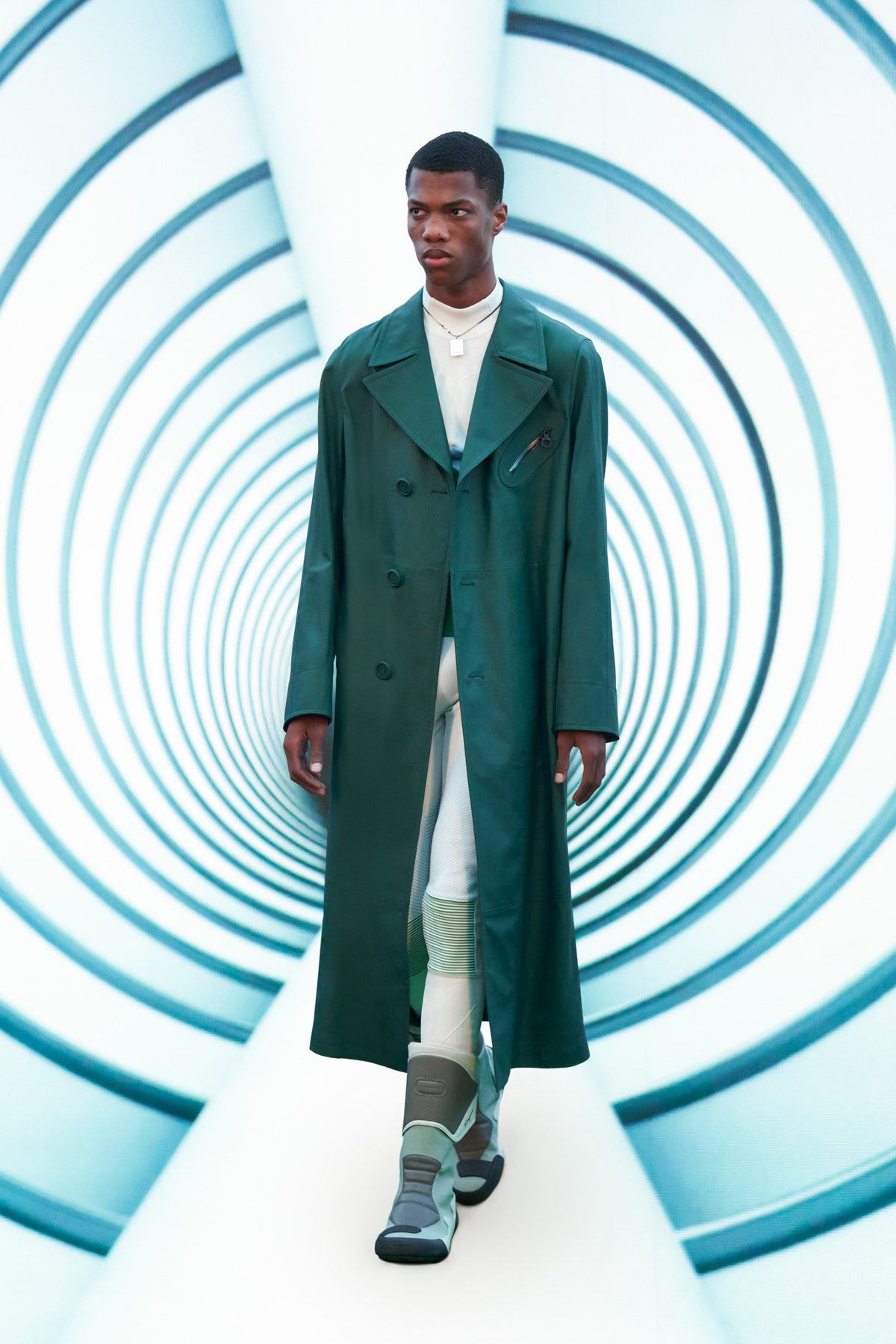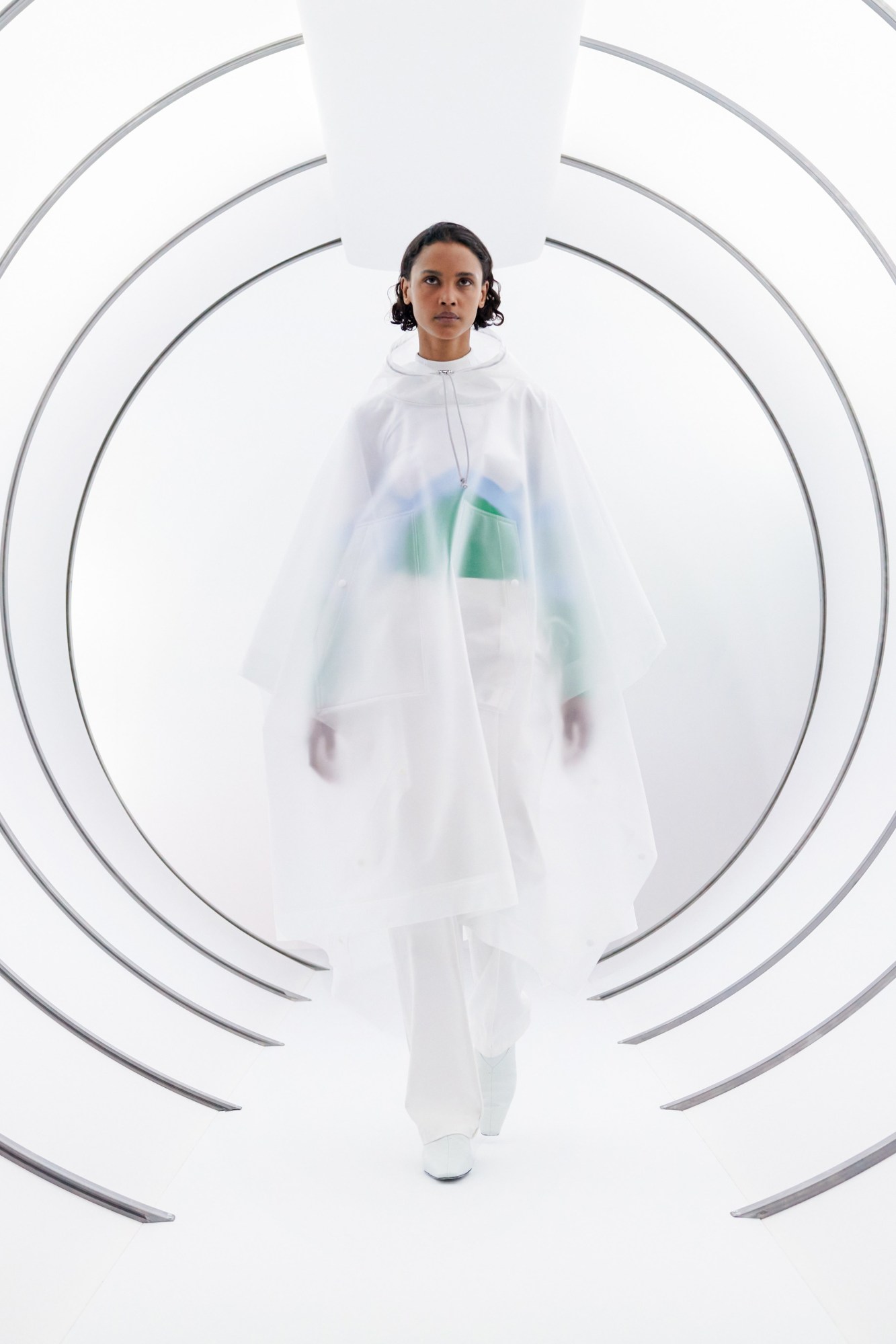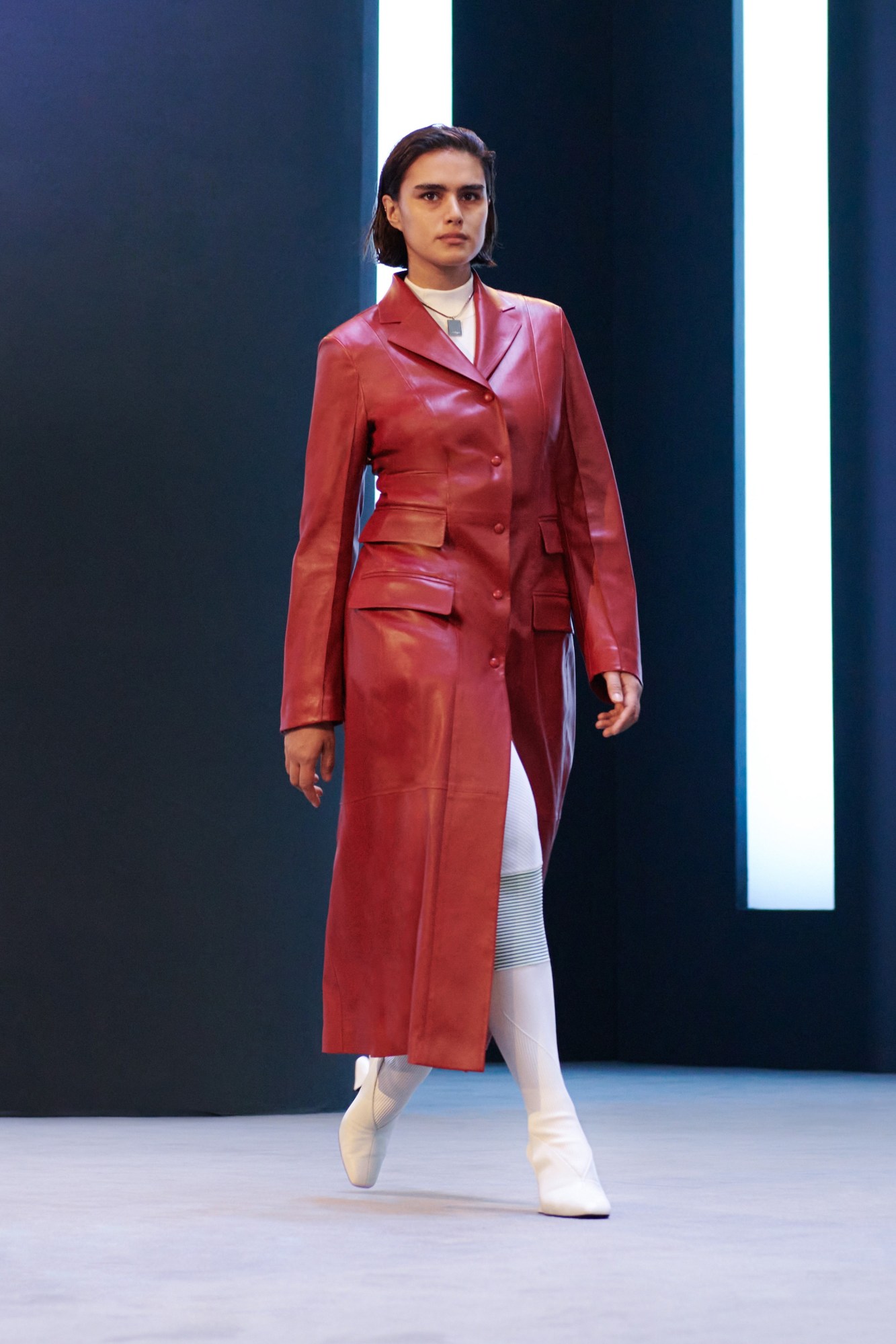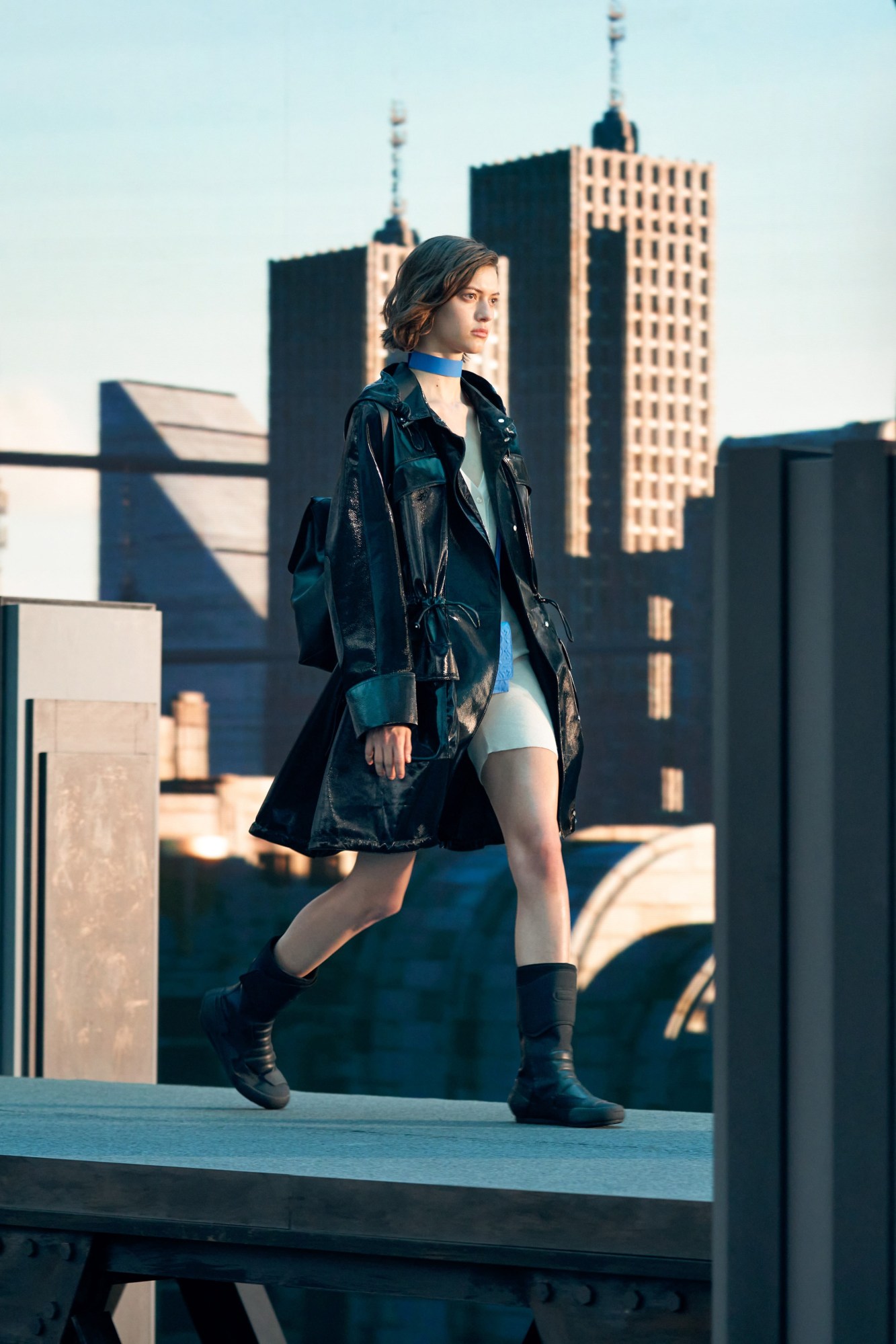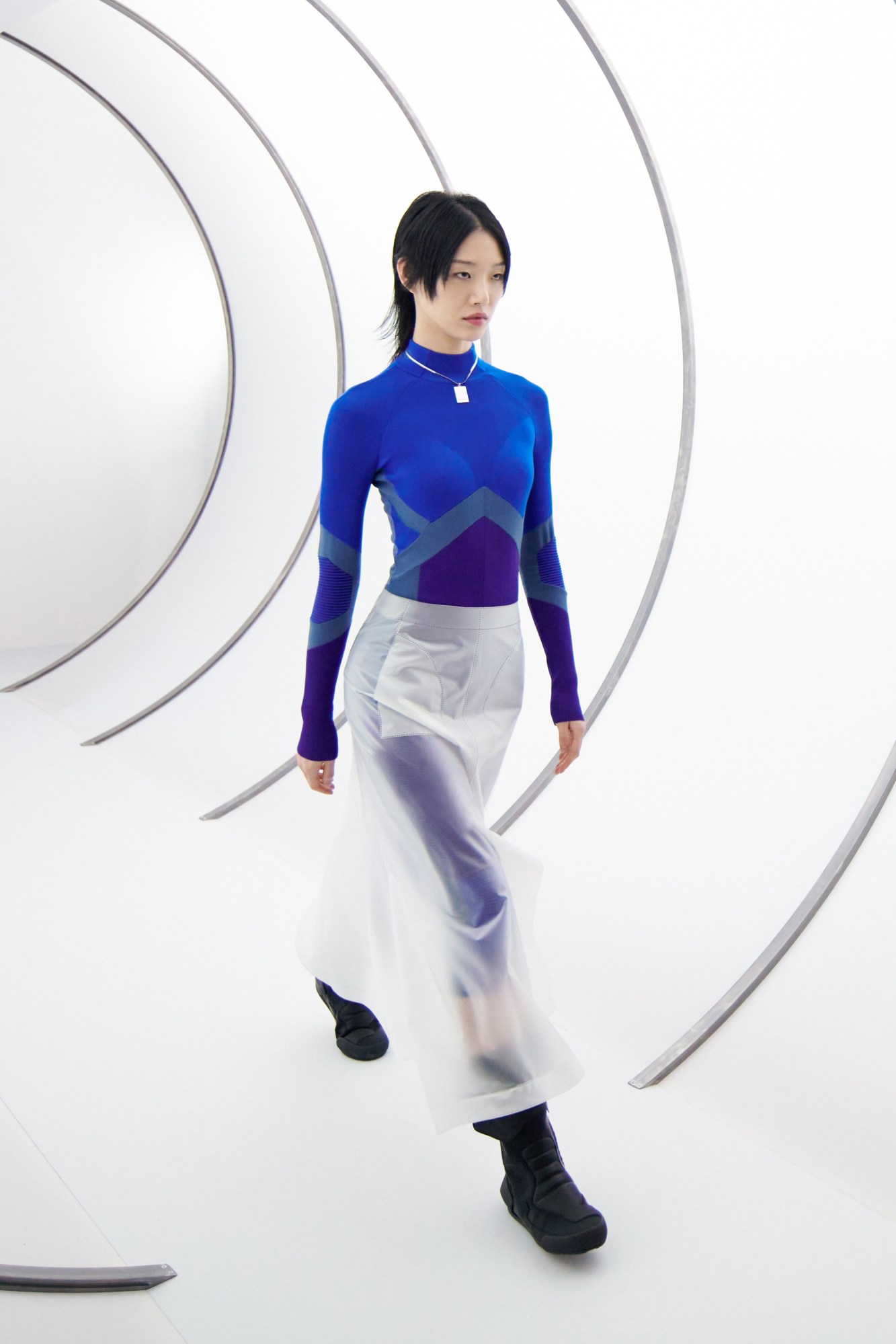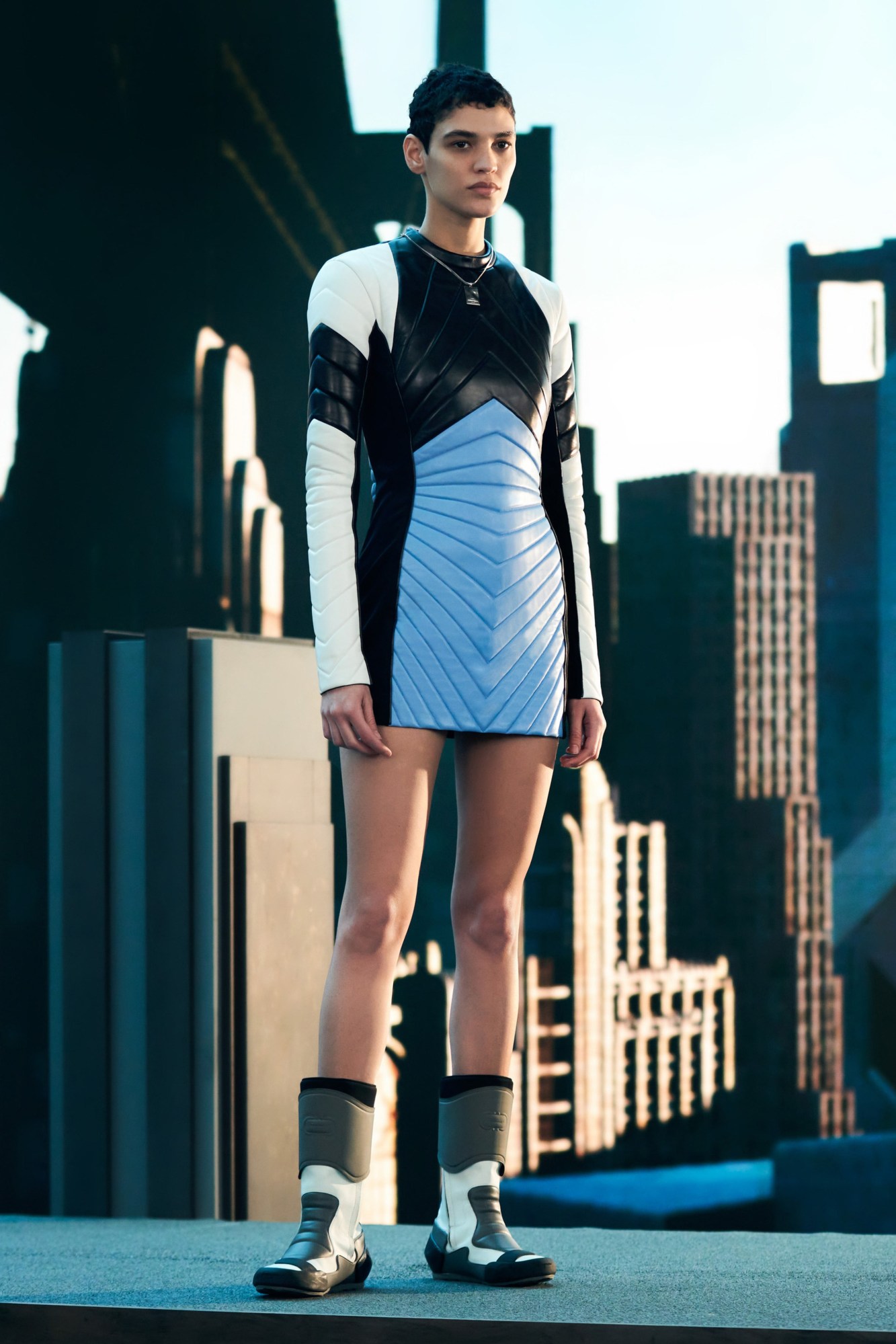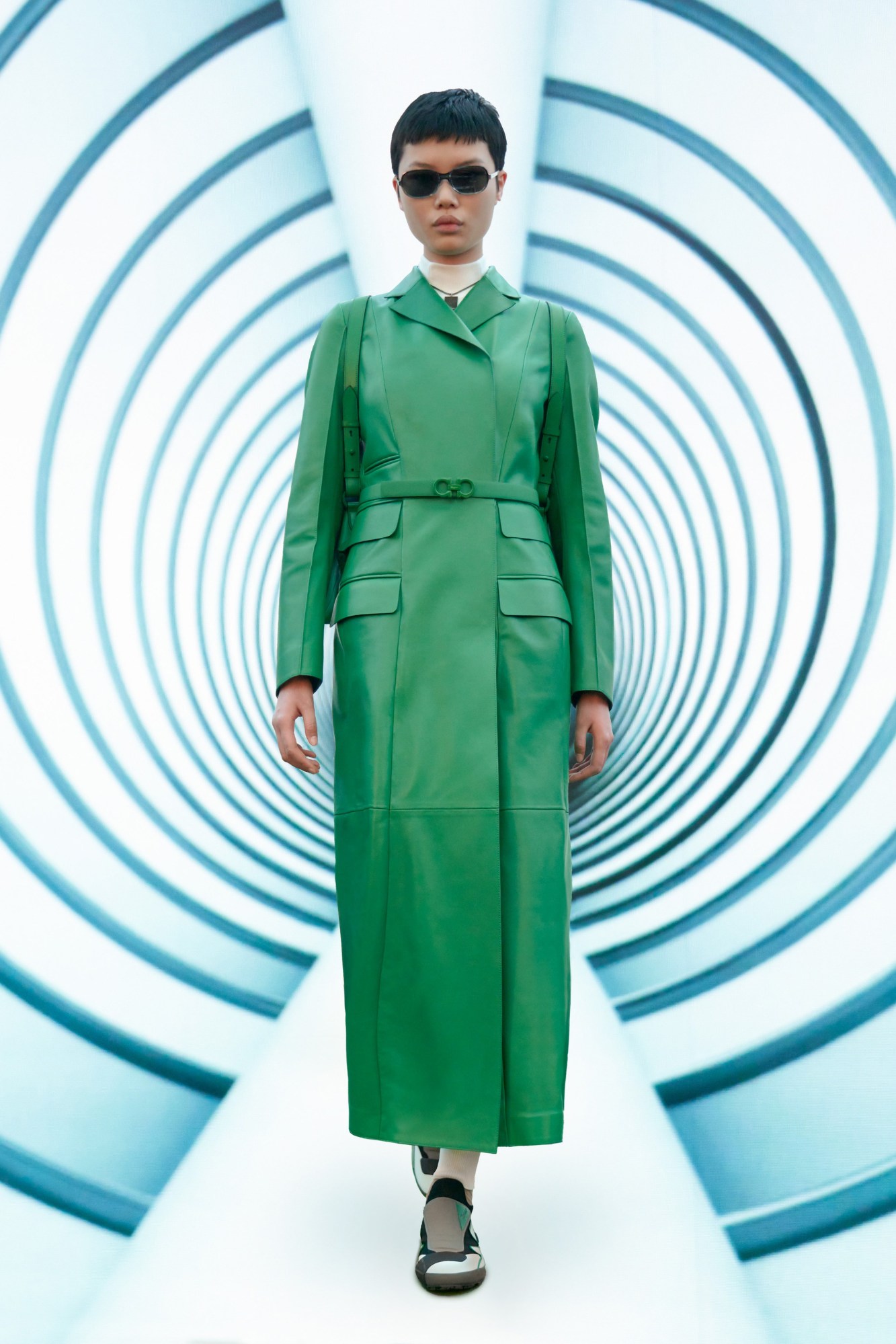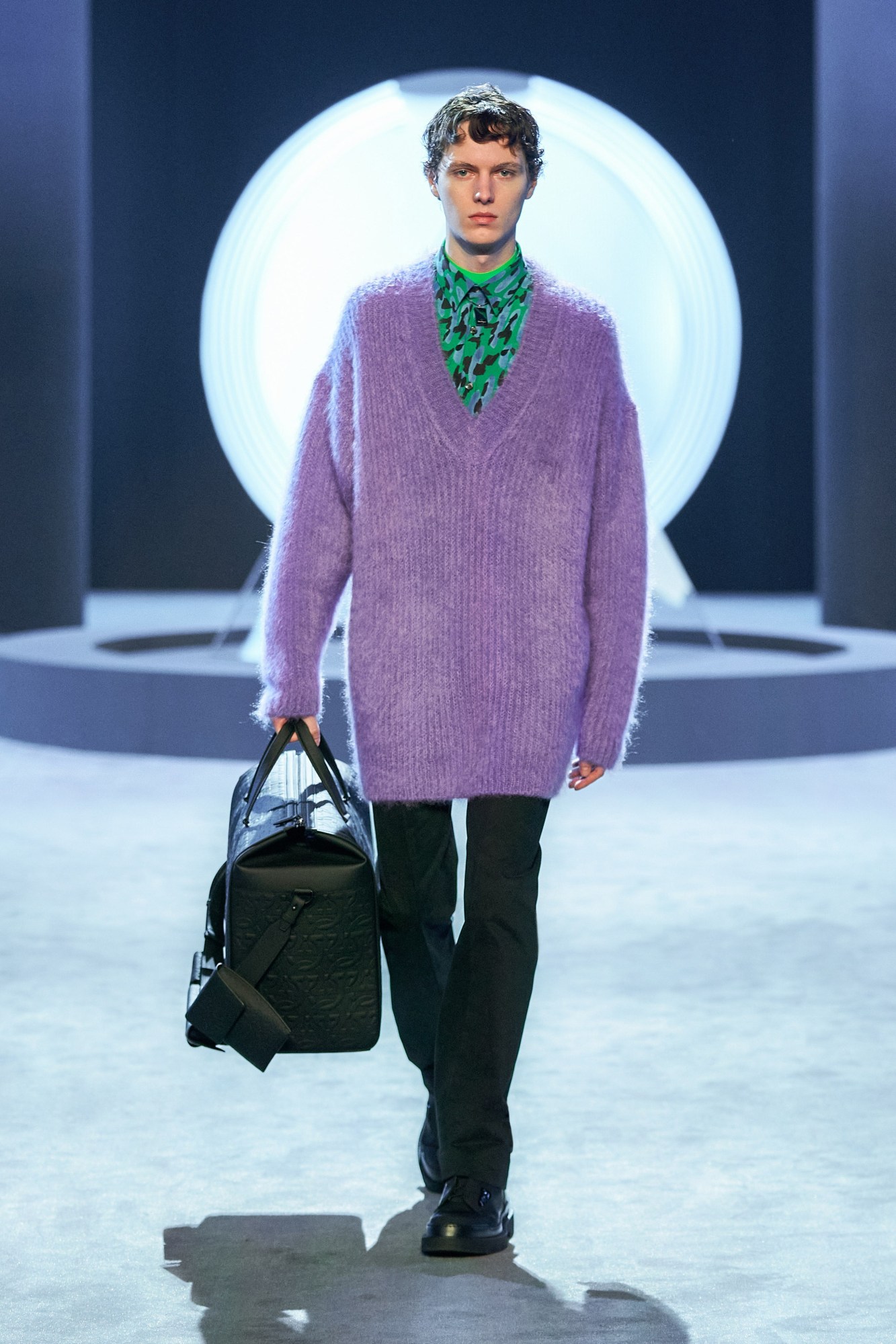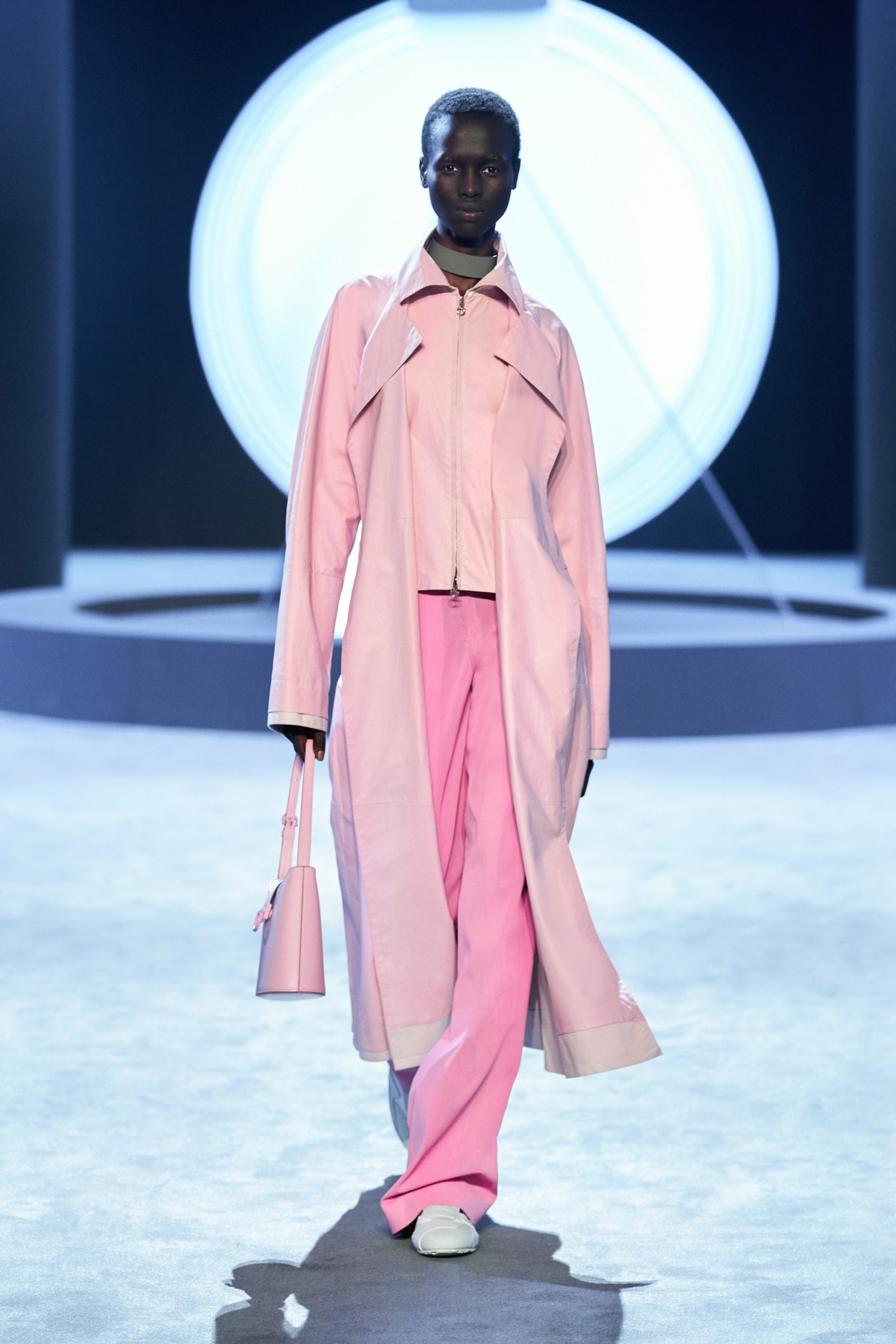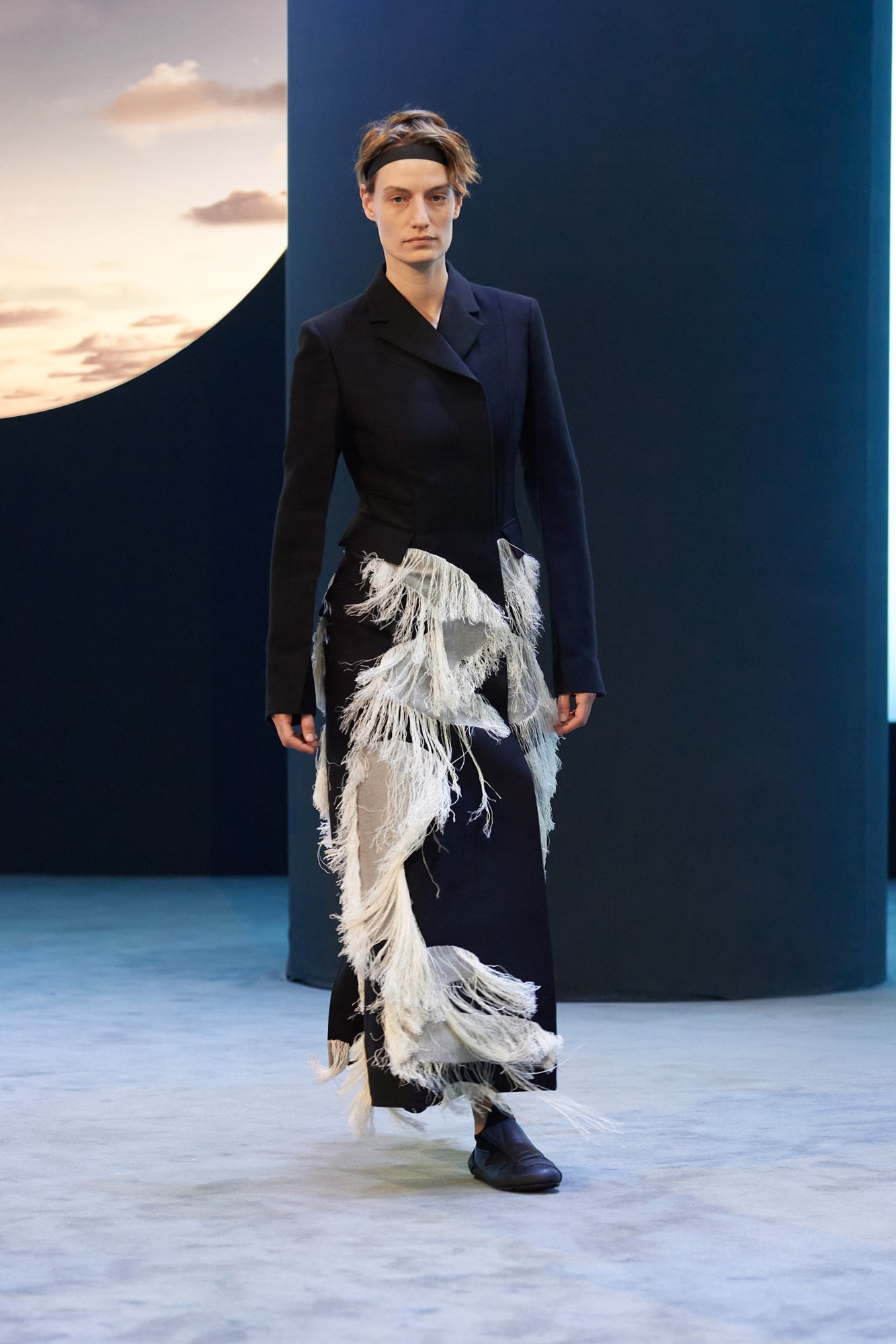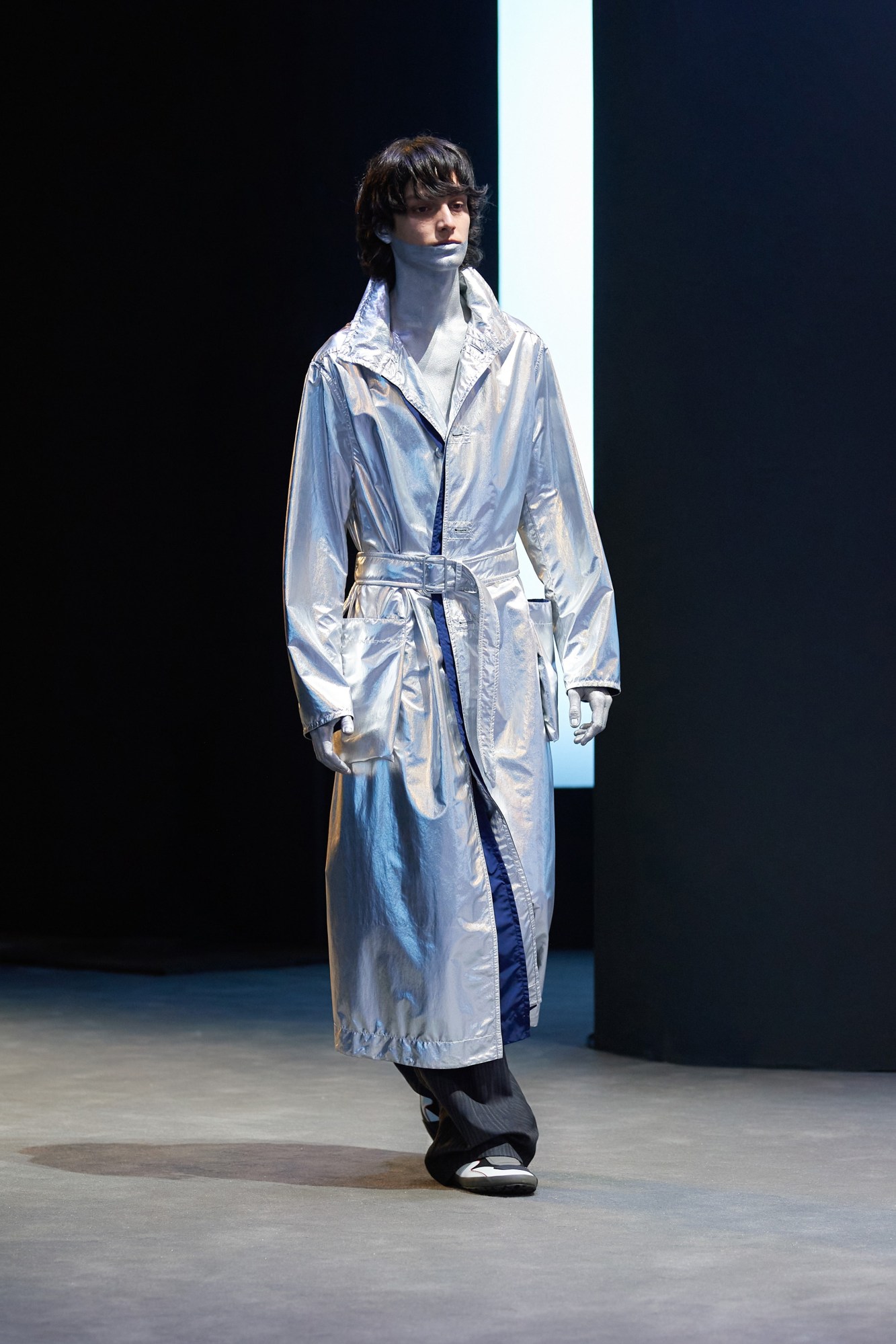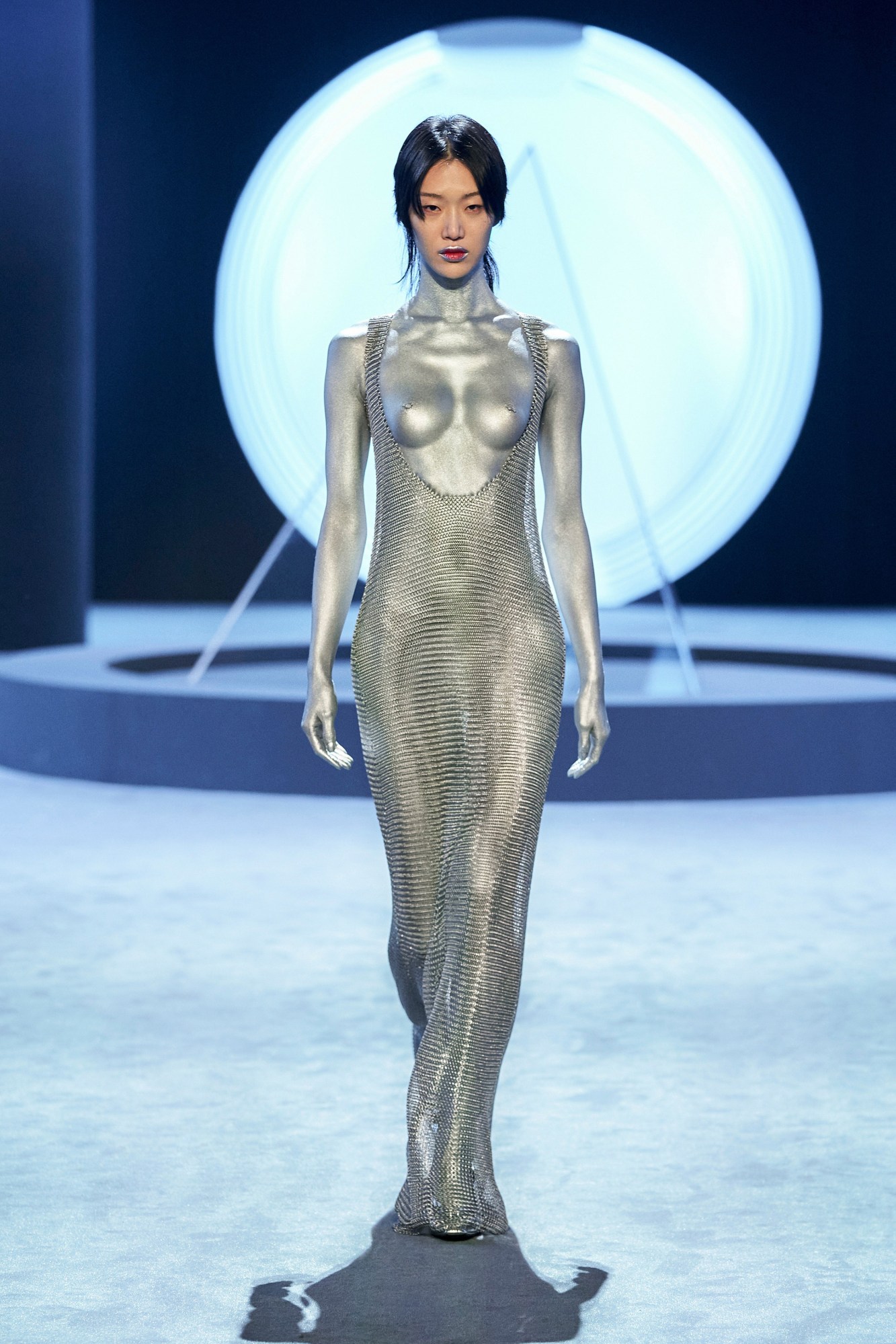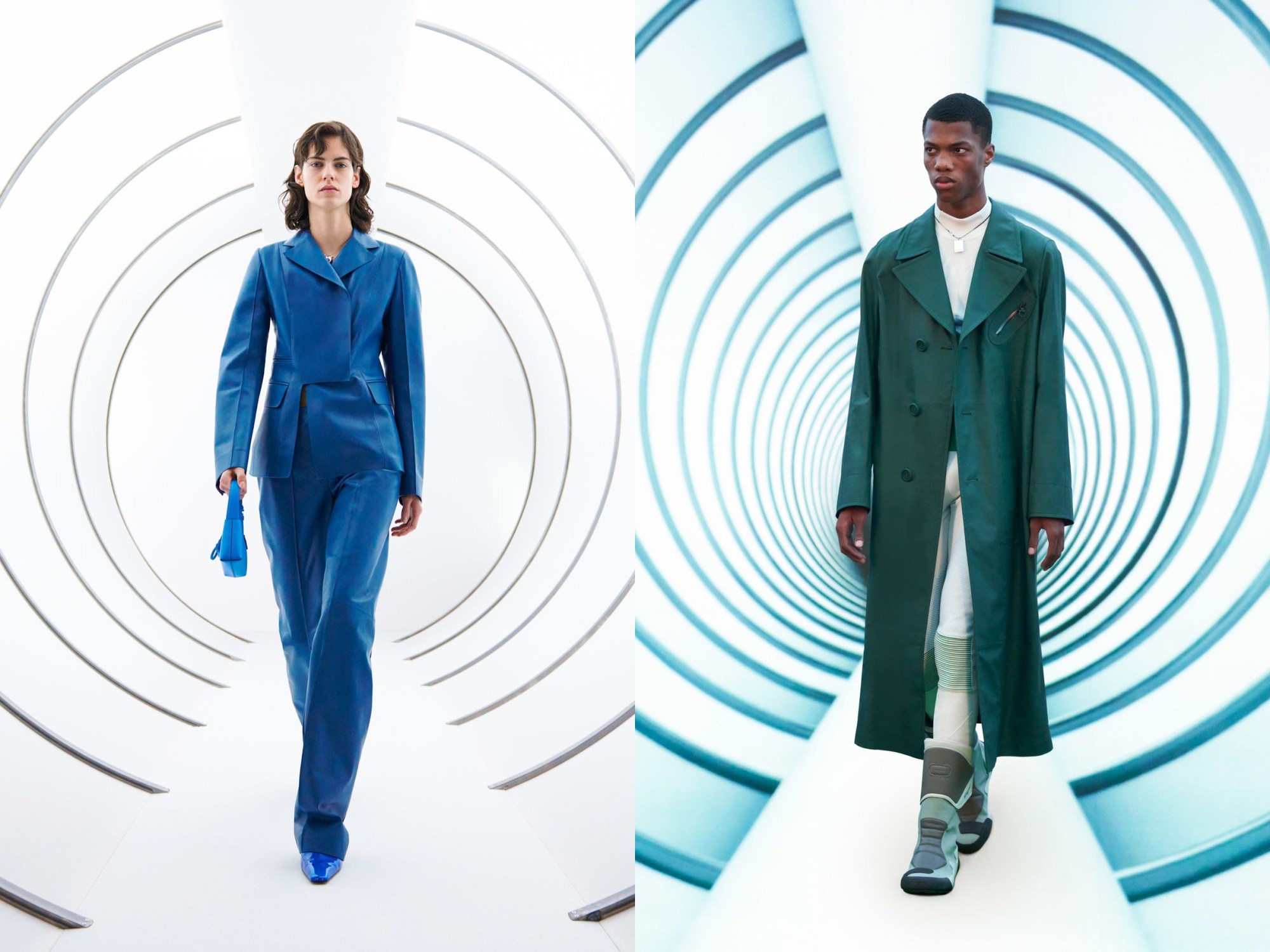“In fashion, the past exerts a gravity,” says Salvatore Ferragamo’s creative director, Paul Andrew. “For this season I wanted to invert that physics. The objective was to engineer a collection that sees the present through a prism of the future.” In other words, looking forward in order to reflect on the present. What would future generations discover if they went vintage-shopping for 2021? Paul’s co-ed AW21 collection for the Italian house collection was an ode to sci-fi, inspired by cinematic classics such as Gattaca, Until The End Of The World, and The Matrix. He riffed on four categories of 21st century uniforms —business, military, evening and sporting – and reimagined them as “fossilised remnants of a long-forgotten past”. But whereas most sartorial nods to that cinematic genre are steeped in nostalgia for ‘60s Space-Age shapes and gimmicky moon-landing garb, this was a more nuanced exploration. Not so much retro-futurism, but future-retroism.
What does that look like, according to Ferragamo? To start, it’s colourful — almost as colourful as those famous rainbow-striped platforms Salvatore made for Judy Garland in the ‘30s. Lime leather coats, zingy orange high-waisted trousers, parrot-green and lilac mohair knits and plenty of pink — millennial pink, perhaps, discovered years from now as a strange relic of the early 2010s. Supple nappa leather coats were also a key element, as well as wide-leg trousers, side-slit dresses and sleek, clean-lined silhouettes that don’t betray a point in time. Most of the pieces devoid of any superfluous embellishment, bar a handful of pieces with swirls of white fringing. To set the tone, Paul worked on a video presentation (last season, he collaborated with Luca Guadagnino on a Hitchcockian movie) which was shot as a CGI-aided virtual reality, replete with a futuristic cityscape, white-lit tunnels that models — some of whom were painted silver for the final metallic-leather and chainmail looks — emerged down before circling a revolving glass pyramid.
But perhaps the most futuristic element of the collection was the environmentally-conscious materials. Of course, Ferragamo is one of Italy’s most cherished heritage houses, starting life as a luxury footwear brand with leather craftsmanship at its heart. However, Paul was looking forward to a time when fashion will have adapted to methods of production that aren’t so harmful to the planet. There was a polyester dress made from recycled plastics, soles of shoes made responsibly-sourced wood, recycled rubber and plant-based tans on leather. Threads used for footwear were recycled, and wool and cashmere was upcycled from offcuts, avoiding virgin material production. A slew of Blade Runner–esque ponchos were made from transparent biodegradable PVC. Here was a prescient message about the future: if fashion doesn’t start rethinking its environmental impact, perhaps there won’t be one to look back from.
